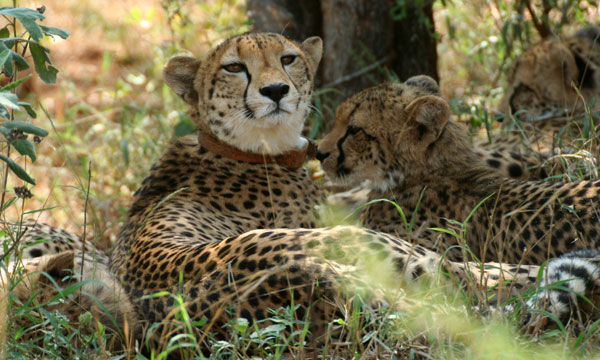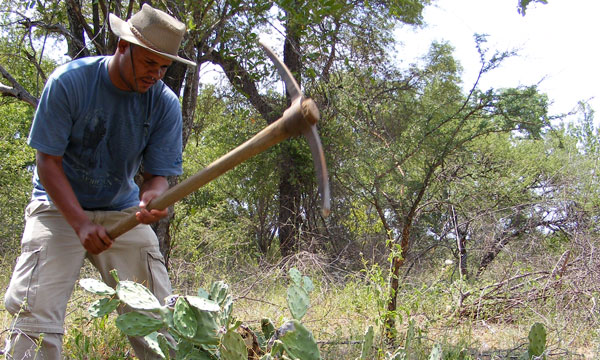Heli Patrol Flights
HELP US STOP WILDLIFE POACHING
Makutsi conducts anti-poaching activities during the day and night. We conduct patrols on foot, horseback and in Land Rovers in search of snares, broken fences, injured wildlife, human tracks & signs of trespassers.
We can only cover a limited amount of land in a certain time frame. By using a helicopter we are able to cover the whole reserve with a birds eye view.
One way that you can contribute in the fight against poaching is to join us on a scenic heli flight over the reserve.
By using a helicopter we are able to cover more ground in less time as well as be a visual deterrent to potential poachers.
If poachers see that we are flying over the reserve on a regular basis it might deter them from trying to enter our reserve.


What do you get out of it?
• Heli Safari – One of our guides will accompany you on the helicopter and will point out wildlife as well as explain the work that is being done
• Experience and enjoy the breathtaking scenery from the air
• Personal contribution to help in the fight against poaching
Duration: a 35 minute flight – max 2 people per flight
(or 4 people can share – 2 people fly 15-20 minutes each)
Conditions: Subject to availability & weather dependent


Conservation

Cheetah Conservation
The Cheetah, one of the world’s most fascinating and beautiful cats, is in danger. The cheetah is the fastest land animal on earth and can reach a top speed of 100 kilometres an hour. Unfortunately for the cheetah they prefer large flat land to hunt at their top speed, which means that they sometimes roam onto farmers property and are then removed permanently. This loss of habitat, along with their low reproductive success caused by poor gene diversity, has reduced the Cheetah numbers to less than 10 000 worldwide.
Our aim is to inform people on why the cheetah is endangered and to learn how we can look after the environment and ecosystem to prevent polluting and destroying their habitat. Through environmental education, we hope to educate our guests and change the attitudes and behaviours that have led to the endangerment of predator species and help save them from extinction.
Just to name a few reasons why cheetahs are endangered:
- Lack of knowledge by humans about predators, many people deal with their fear by eliminating predators.
- Loss of habitat and prey to commercial/free-hold farming and development
- Prosecution by farmers as vermin or livestock-killing conflict animals
- Numbers have suffered due to inbreeding or poor genetics
- High infant mortality
- A reduced ability to survive in parks and reserves due to the presence of larger predators.


EWT Cheetah Meta-population & Makutsi
Makutsi Safari Springs work closely with Endangered Wildlife Trust (EWT) in expanding the genetics available for captive cheetahs and to ensure genetic diversity through their Cheetah Meta-population scheme. Cheetahs have very low genetic diversity, which puts them at high risk of diseases which can wipe out an entire population. By being separated into many sub-populations, this prevents spread of disease, should it occur, as only healthy animals are ever moved from one reserve to another.
We aim to always have a male and a female cheetah on the northern section of Makutsi. Once they have cubs, and the cubs are around two years of age, they are moved to another reserve within the Meta-population in order to diversify the genetics and to prevent in-breading. EWT constantly improve their genetic library of all the cheetahs in the Meta-population and are then responsible for finding a suitable home for the cheetah, taking into consideration the genetics of the other cheetahs on the new reserve.
As a guest on Makutsi you have the opportunity to take a drive with one of our cheetah research guides, where you can learn about the cheetah and the importance of conservation. Our adult cheetahs have collars which allow our guides to track the movements, eating patterns and favourite places on the reserve. This way we are able to monitor the daily life of our cheetah!

Bush Clearing
On the Makutsi section of the reserve (north of the gravel road), elephants have not been introduced due to the fact that they are bulk feeders and require up to 200kg of food daily. The fact that they are unselective feeders and graze on the grasses also puts them in competition with the white rhino, which Makutsi has many of on the north.
Without an elephant population the vegetation can become very dense. This poses a problem not only because it is then harder to see the animals, but it can change the habitat by creating thick stands of impenetrable bush closing off the light for palatable grasses to grow.
Certain species of tree/bush are more likely to create these conditions. We call them invasive species.
Makutsi management assesses these conditions and when necessary sends in teams of bush cutters to thin the vegetation out. Only invasive species are targeted. The cut vegetation is left on the ground so that it creates a trap for grass seeds and protects the growing grasses from being overgrazed, this is known as brush packing. This vegetation slowly decomposes and the nutrients are returned to the soil. The whole process can take one to two years depending on rainfall.
Erosion
Erosion is the process whereby valuable top soil is lost / misplaced to natural elements like wind and rain. This isusually caused by irresponsible farming and overgrazing, but does occur naturally to a certain degree.
Loss of vegetation is the starting point for erosion to occur, so the best option is to take care of the vegetation, prevention is better than cure.
Makutsi keeps a close eye on any erosion taking place on the reserve, be it in the bush or along the roads that cut through the reserve. Road erosion is the primary type of erosion on Makutsi. Water finds an easy path to flow along the roads, which have been cleared of vegetation. Roads that are sloped have to have bolsters (these are the speed bumps you drive over on game drive) placed along there in order to direct the water off the road and into the bush . This slows the erosive action of running water.

Different types of soil are more prone to erosion. Sandy soils are easily eroded due to the loose nature of the soil. It is thus never a good idea to make a road or clear vegetation from sandy soil areas.
Clay soils become sticky during rain. They are less affected by erosion because the soil particles cling together, however erosion can be caused by driving through these areas after or during rain. Great care is taken to repair the tyre tracks through such areas to avoid erosion beginning, and off road driving on clay soil is never a good idea, especially after rains.
Rocky soil is the least affected by erosion due to the size of the soil particles.
The best way to combat erosion is to encourage the growth of vegetation on the areas. This is done by packing rocks and/or branches (brush packing) into erosion gullies to slow the flow of water and act as a trap for soil and seeds to re-establish.
Indigenous Plants and Alien Plants
Indigenous plants are plants that occur naturally on the reserve. Makutsi takes part in Arbor Day (1 – 7 September) where in collaboration with the Karongwe Game Reserve 10 indigenous trees are bought and planted, each year & by each Lodge, onto the reserve.
Alien plants are the complete opposite to indigenous. They are plants which do not occur naturally but have been introduced by man. These plants thenoften out-compete the indigenous plants for resources and thus have a detrimental effect on the habitat. Makutsi guides identify areas where alien plants are becoming a problem and then remove them manually and burn them. A good example of alien Plants on Makutsi are the prickly pears, a Mexican cactus.


Roads and Fencing
Maintenance of roads and fences is a continues affair and is done on a regular basis. The Guides are responsible for reporting any roads damaged by erosion or overgrown by vegetation. These roads are then repaired as efficiently as possible by guides or staff.
The electric fencing around the reserve runs at a pulsed current of 8000 volts, enough to make an elephant think twice. An electric fence is also a good indication to people outside that there is potentially dangerous wildlife on the reserve.
This fence is maintained and checked daily. While the electric fencing is being checked, any holes or other damage is repaired. Vegetation along the fences is removed especially along the bottom as this interferes with the electric current.
Game Counts and Sex Ratios
Game Reserves in South Africa are fenced areas keeping the animals from wondering onto farm land. Being an enclosed area the numbers of animals on the reserve need to be monitored making sure that the carrying capacity of the reserve is not exceeded, causing overgrazing.
Makutsi, in collaboration with Makgagolo Game Reserve, does a game count of all the species every two years. This is done by helicopter and involves flying over the area in a previously determined grid pattern while two counters spot and count the animals below. This gives an estimate of the population and is used, with the help of a few equations, to determine the total population size for each species. These figures are then compared to previous years totals and trends in the population size can be determined. Added to this is the numbers of adult females in ratio to adult males. These ratios are important to ensure maximum productivity of each species.

Community

Sekororo Tribal Area is located at the base of the Drakensburg Mountains and is home to about 40 of our staff members. These staff members are employed in positions ranging from tour guides to kitchen & housekeeping, construction & gardening. On average, they have been working at Makutsi for 10-20 years, and each staff member supports 5 to10 family members and friends in the local community. After so many years of working for Makutsi, we consider these staff members as our extended family, and have a personal obligation to give back to the community and ensure that the schools and clinics are well maintained for the future, as well as constantly making sure to nurture a respectful and friendly relationship with our neighbors.
For the last 15 to 20 years Makutsi has dedicated many hours of labour and material to several schools, with the goal of improving their facilities. Here are just a few examples of what projects Makutsi has invested in:
- Buying building materials and tools to be delivered such as, bricks, cement, windows and frames
- Employ locals to do most of the work, together with some Makutsi staff to supervise
- Build classrooms, toilet blocks and improve the water supply to these schools
- Purchase simple necessities such as chairs, printing machines and other school supplies, as well as repairing windows, roofs etc.
We cannot forget to give a big thanks to our guests, who have provided donations and personal items for the children at the schools.


